11 Things to Do in Segovia Spain | FAQs + Travel Guide

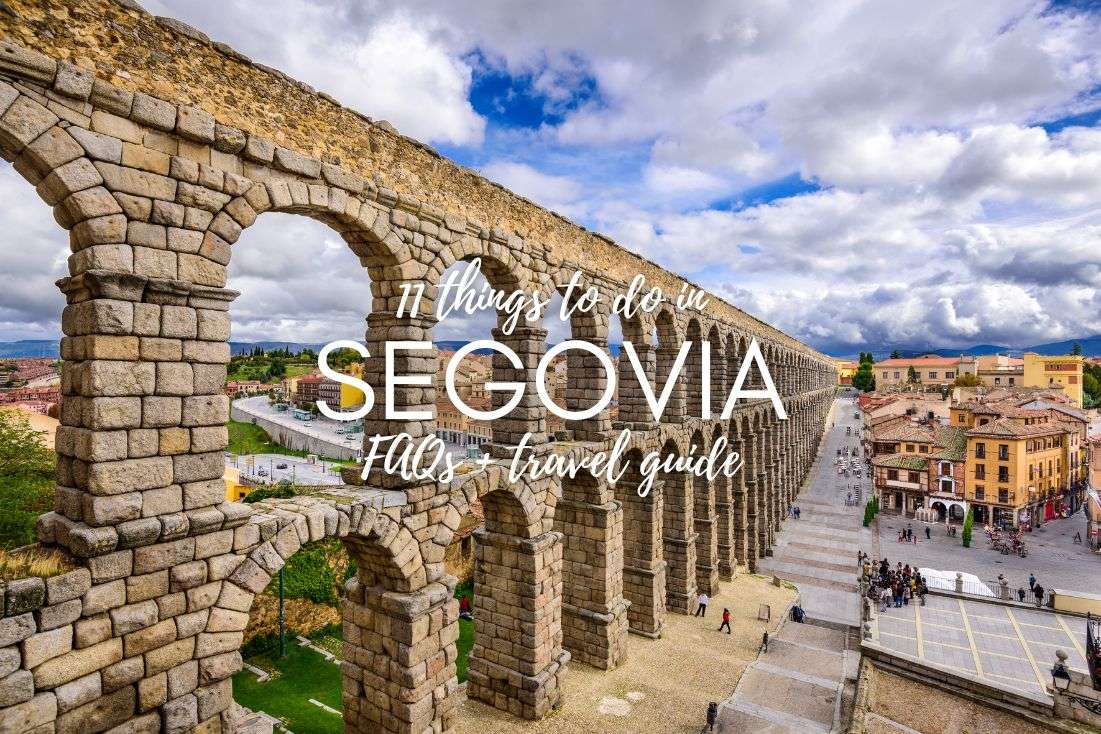
Segovia has it all for the perfect day trip. Imagine a place with a Roman aqueduct that’s still standing tall after two millennia, a fairytale castle that, in my opinion, is the best in Spain, and, let’s not forget, those adorable suckling piglets that are a local delicacy (sorry, but yum!). Getting here is a breeze—just hop in a car or take a train from Madrid, and voilà, you’re in Segovia.
Before I visited, I thought Segovia was just a city with some nice viewpoints. Boy, was I wrong! The viewpoints here are the absolute highlight, offering some of the most stunning vistas I’ve ever seen. Aside from maybe Cuzco, I can’t think of any city as breathtaking from above as Segovia. Its monstrous castle, which puts Neuschwanstein to shame, and the picture-perfect cathedral with a tower so huge you can see it from 20 km away, are sights to behold.
And then there’s the Roman aqueduct. It’s one of the most famous monuments in the world, and for good reason. This amazing piece of architecture has survived 2000 years without being destroyed—not by Arabs, fascists, or the Reconquista. It’s a lucky monument, indeed!
My top tips for Segovia
- Skip the group tours. Day tours often rush you through Segovia because they’re combined with Avila, and trust me, you don’t want to hurry through this place. Each of these cities deserves a full day.
- Go by train. Normally, I’m all about renting cars and road trips, but parking in Segovia is sparse and pricey. So if you're visiting from Madrid, ditch the car. The train ride from Madrid to Segovia is straightforward and convenient. We drove here during our Castile and La Mancha road trip, and parking was a challenge.
- Go and eat little babies (suckling pigs). Alright, this sounds harsh, but it's a local tradition, and who am I to judge? Segovia is famous for its cochinillo, or roast suckling pig. There are Michelin-star restaurants here offering this delicacy. I've seen it across Europe, but its origins are right here in Segovia. You just have to try it—it's a delicious abomination you won’t forget.
- Free things to do in Segovia. Segovia’s most spectacular sights are best viewed from the outside, and the viewpoints are free! The city itself is a visual feast, so you can enjoy many of its highlights without spending a penny. (But then make sure to spend those pennies and actually visit some places.)
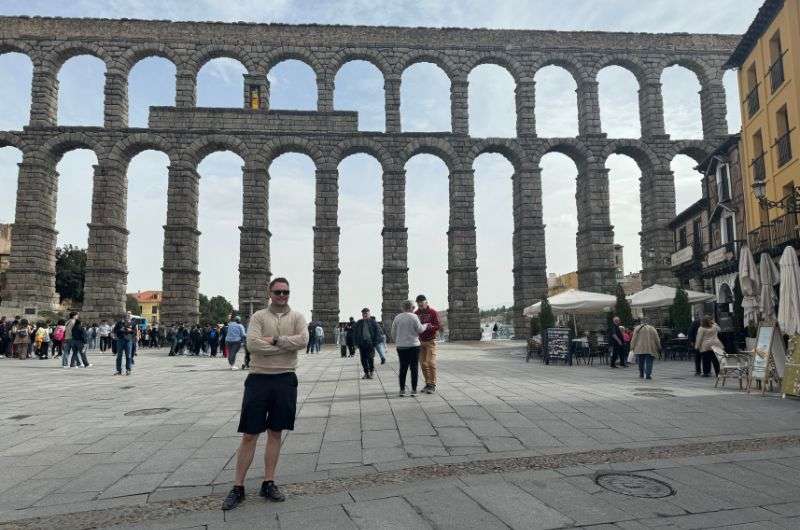
There is a lot to see in Segovia! A classic favorite, the aqueduct, only made it to my no. 4 spot!
Quick list of top things to do in Segovia Spain
After my own visit, I have ranked the top things to see in Segovia in the order from wow to mediocre, as follows:
- All the miradores (viewpoints)
- Segovia Cathedral
- Segovia Castle (Alcazar de Segovia)
- Roman aqueduct
- Royal mint (Real Casa de Moneda de Segovia)
- Eat a piggy, oink
- Royal Mile (Calle Real)
- Sanctuary of Our Lady of Fuencisla (Santuario de Nuestra Senora de la Fuencisla)
- San Martin Church (Iglesia de San Martin)
- Jewish Quarter
- Casa de los Picos (very optional)
Segovia orientation + map
Here’s a map showing the location of all the top things to do in Segovia covered in this article. You can get the list on Google Maps and use it for your own trip
Alright, let’s get you oriented in Segovia. The city’s layout is compact and super easy to navigate on foot. If you’re coming by train (which you should, because parking here is about as easy as finding a unicorn), the station is conveniently just outside the city center. A quick taxi or 20-minute walk will get you to the heart of the action.
Driving? Well, prepare yourself. Parking in Segovia is sparse and pricey, so ditch the car if you can. We had to bring ours during our Castile and La Mancha road trip, and parking was a real challenge. If I were just taking a day trip from Madrid, I’d be sitting on a train for sure.
Tip: For more awesome day trips from Madrid, check out my itinerary for Ávila and another for a day in Toledo.
As you wander around, you'll notice the city is peppered with Gothic churches and medieval structures at every turn. And don't even get me started on the jamón serrano—my all-time favorite cured ham. You’re in for a treat as you explore the narrow streets, historical sites, and, of course, indulge in the local culinary delights.
Stay the night? Segovia is compact, but it’s a full day and a lot of walking. If you’d prefer a more relaxing pace, or if you think that your suckling pig dinner will wipe you out, stay the night at the 5-star Áurea Convento Capuchinos Hotel—it’s a former monastery right in the historic city center!
Here are the things you shouldn’t miss in Segovia, Spain:
1. The viewpoints (miradores)
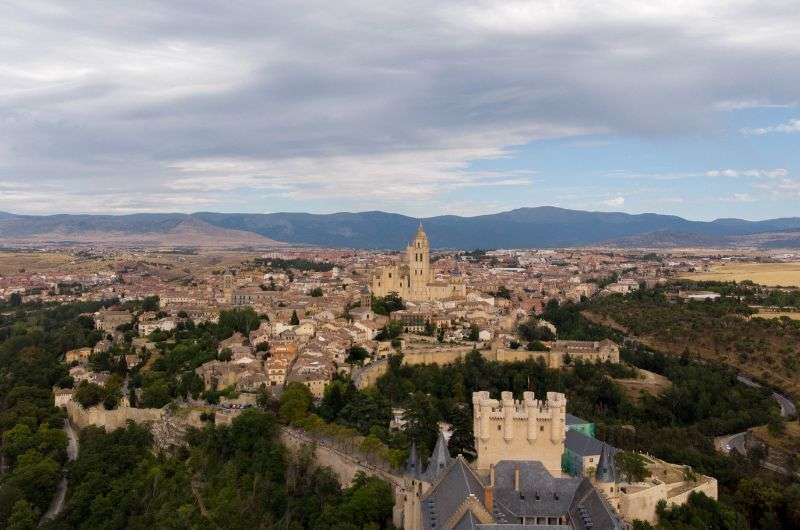
Gorgeous views to fill your Instagram with. Btw, have you seen my Instagram?
- Price: free
- Why I liked it: The views are simply spectacular. Plus, you get a great workout climbing to each one—burn off that suckling pig!
I‘ll start with the viewpoints, because the best thing to DO in Segovia is to look at Segovia. All around Segovia, there are views of the gigantic Alcázar, which has inspired Disney many times, and honestly, I totally understand why. There are very few castles this huge and beautiful, especially those perched on a cliff like this one. If you compare it to Neuschwanstein in Germany, it really doesn't hold a candle. The Segovia Alcázar is much bigger, and staring at it from different viewpoints just doesn’t get old.
Mirador de La Pradera de San Marcos
First up is Mirador de La Pradera de San Marcos. This spot gives you the quintessential postcard shot of the Alcázar, viewed from below. We kicked off our trip here, and the castle looks so epic I half expected a dragon to fly out. According to TripAdvisor, this is the fifth best place in the city, but I’d rank it even higher.
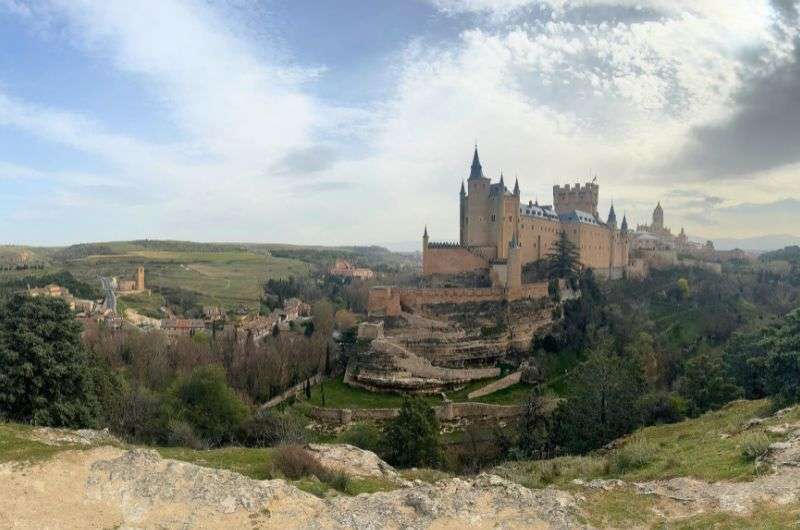
Alcazar from the Mirador de La Pradera de San Marcos
Mirador de Cristian y Estefi
A stone’s throw from the most famous viewpoint, Mirador de Cristian y Estefi is another gem. It’s just a couple minute walk uphill and totally worth the legwork. You’ll be rewarded with classic, breathtaking views that make you want to snap a million photos.
Mirador de los Dos Valles
Feeling a bit more adventurous? Continue up to Mirador de los Dos Valles. It’s a five-minute walk from the last viewpoint, and the castle looks completely different from this angle—almost like a tower. The walk is lovely, with gorgeous views of the castle, surrounding churches, and convents. I loved the view of the cathedral from here, I thought it was the best place to see it from. Just remember, this viewpoint is above the road on a cliff, not right on the road (some people seemed to stop prematurely).
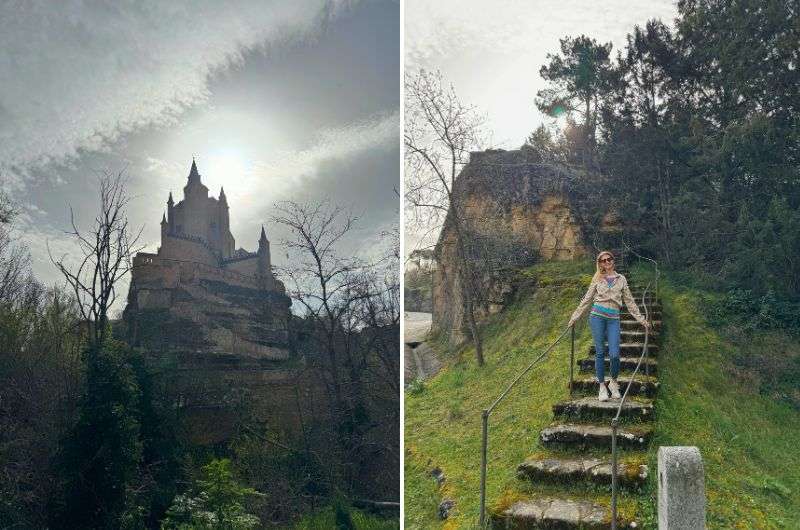
Hiking with rewarding views—that's my thing!
Mirador del Último Pino
For those who skipped leg day (again), this one’s a bit of a challenge. Mirador del Último Pino is a five-minute stair climb, so if you haven’t shed those winter pounds yet, maybe give it a pass. We made it and found ourselves on the same level as the castle, with epic views from a completely different angle.
2. Segovia Cathedral (Catedral de Segovia)
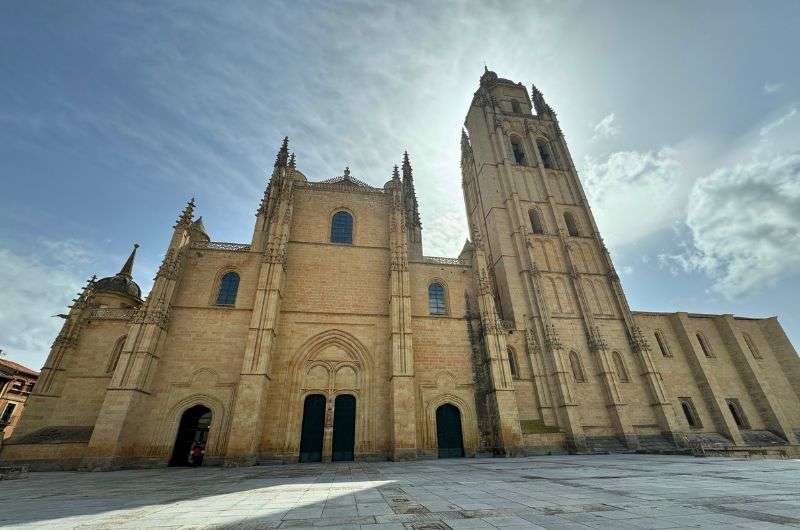
The majesty of Segovia Cathedral can't fit in one photo!
- Price: EUR 4 + EUR 7 for the tower
- Opening hours: Monday to Saturday 9 am–9:30 pm, Sundays 12:30 pm–9:30 pm
- Website: Segovia Cathedral
- Why I liked it: It’s so huge that if it were an apartment, I’d finally have enough space for all my travel souvenirs and then some.
Segovia Cathedral is the last Gothic cathedral built in Europe. This place is massive, but next to the monumental Alcázar, it actually looks small. I had to chuckle when I noticed this. A place this huge and it is dwarfed by an even bigger mammoth.
Walking inside, you’ll be greeted with classic Gothic everything: high vaulted ceilings, stained glass windows, and a sense of awe that’s hard to put into words. It all looks relatively new, and that’s because King Charles I had it rebuilt further from the castle after the previous one destroyed in a siege of the castle.
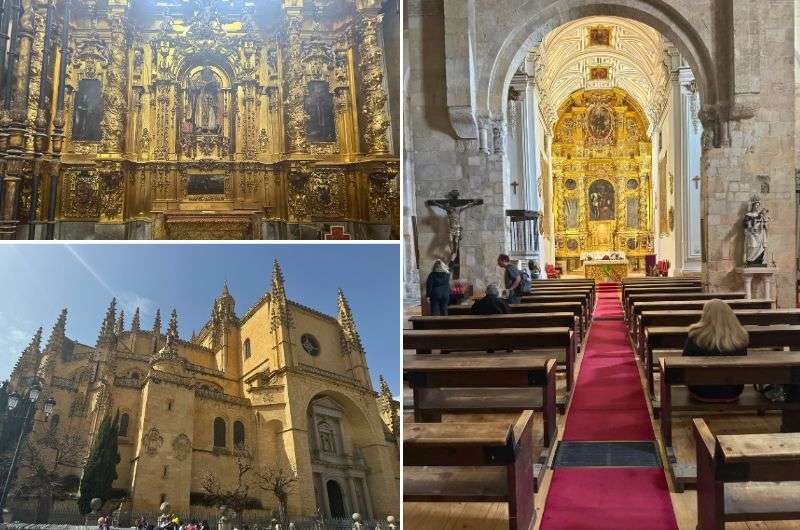
The interior of the Segovia Cathedral is highly gilded
The tower originally stood at 108 m (354 ft) and was the tallest building in Spain at the time of its construction. However, after a fire in the 17th century destroyed the tip of the tower (with mahagony spire), its height was slashed to 88 m (289 ft) and the spire is now made out of stone.
You pay EUR 4 for general admission and EUR 7 if you want to include the tower as well.
Inside the cathedral, there are about a million sacristies (okay, maybe not literally, but it felt like it), art, and life-size statues. The Spaniards sure know how to make everything gleam with gold.
One small gripe: there are no meaningful descriptions inside the cathedral, which is a bit of a letdown compared to the cathedral in Avila. It makes sense to get the audio guide if you aren’t on a guided tour, otherwise you may not experience Segovia Cathedral to its fullest. A little info goes a long way.
The cathedral spans an impressive 14,025 square meters (151,000 square feet)—just imagine that as an apartment! It also houses the remains of 256 people.
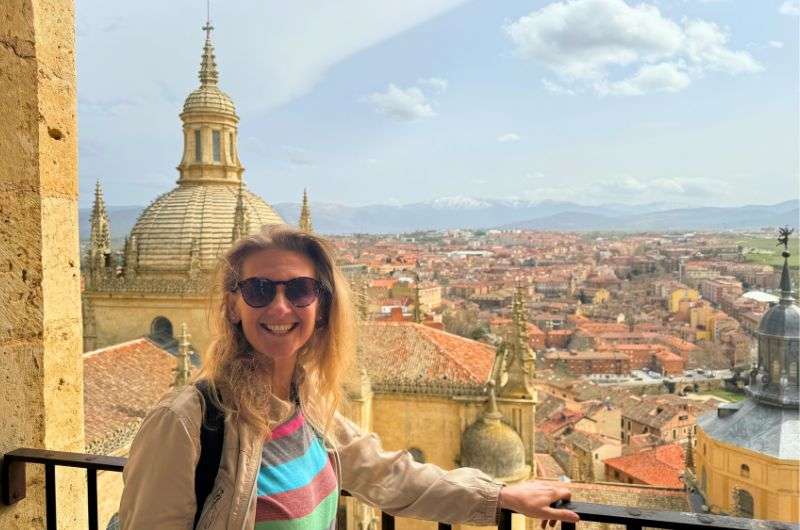
From the tower of Segovia Cathedral you can enjoy beautiful views of the city
The best spot for a photo of the cathedral within the city is the rear courtyard, accessible only from inside the cathedral. But for a shot of the whole thing, you’ll need to head to one of the miradors (viewpoints).
For the tower, remember you can't access it without a guide, so you will be in a group when you go up there. Be ready to climb close to 200 stairs on a spiral staircase. Luckily for those with a little less stamina, there are 2 stops on your way up where you will learn about the bell ringer (you peak into his “house“)—a bell ringer’s job was not easy! You can catch your breath there. Inside the tower, there is a fascinating interactive video and audio guide with interesting facts. The views from the top are simply spectacular, giving you a panoramic look at the city and beyond. The bells up there were made as early as 1480.
3. Segovia Castle (Alcázar de Segovia)
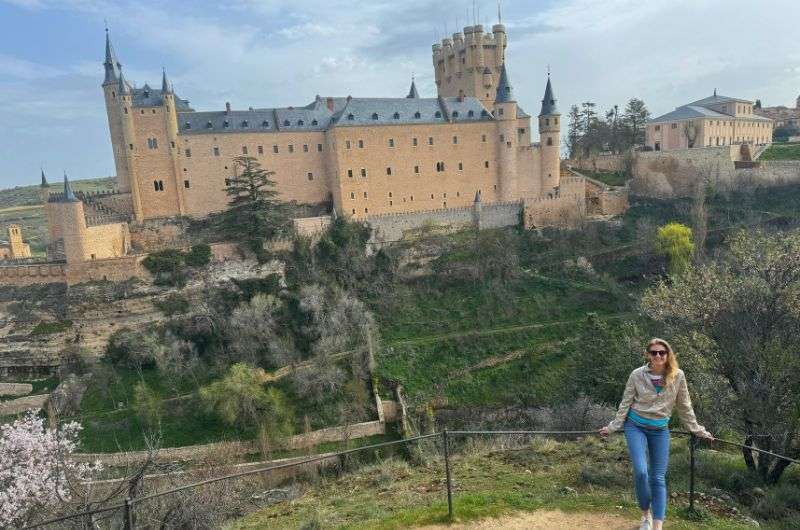
Alcázar de Segovia
- Price: EUR 7 without the tower, EUR 10 including the tower (museum included in both)
- Opening hours: Daily 10 am–8 pm
- Website: Alcazar de Segovia
- Why I liked it: The military museum inside is a dream come true for history nerds and anyone who ever swung a stick around pretending it was a sword.
Next up is the Alcázar of Segovia, a castle so grand it would make even the most regal princesses feel right at home. This fortress has served as a royal palace, military academy, and even a state prison. It’s a wonderland of history, architecture, and sheer medieval badassery. Too bad the interior doesn’t live up to the hype—I was a tad disappointed with the walkthrough, despite being blown away by the outside.
The Alcázar was the seat of the Castilian kings, and let me tell you, I was expecting it to be much smaller. But no, this place is enormous. The Spaniards nailed it by turning it into a military museum instead of stuffing it with random rococo fireplaces. Trust me, every kid’s (and adult kid’s) dream is a castle full of ancient weapons, not delicate porcelain.
When you first approach the Alcázar, you’ll find a lovely open space with views in every direction—cue the frantic photo-taking. From here, you get a fantastic view of the cathedral, which makes for a perfect backdrop.
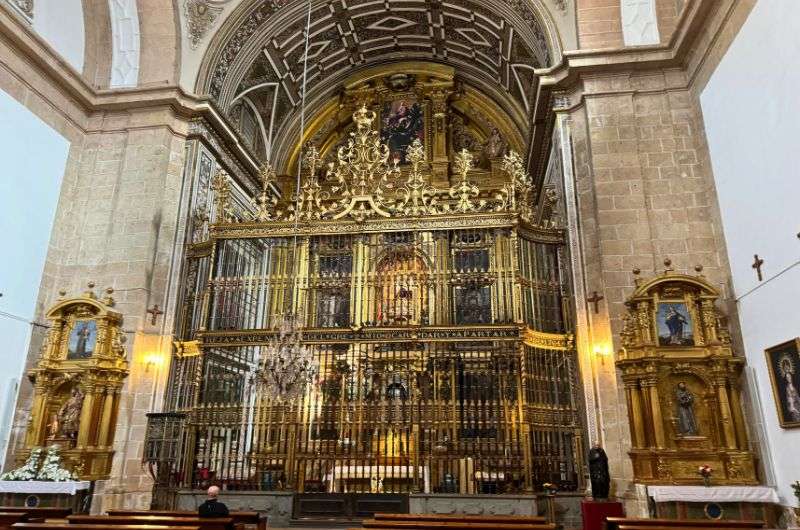
Another typically Segovian gold decoration in the Alcázar
Inside, there’s a large courtyard that makes the castle feel a bit less overwhelming. And the throne room! It might be the first I’ve ever seen, and it’s easily one of the best. The interior has all the classic castle vibes you’d expect: grand halls, intricate ceilings, and a sense of stepping back in time.
As you wander through the castle, you’ll stumble upon the military museum. This place is packed with weaponry from the 15th and 16th centuries—late medieval and early Renaissance periods. The museum’s focus on artillery and its influence on science is something I never thought about before, but it’s fascinating.
The exhibits are entirely in Spanish, but don’t worry, there’s an audioguide you get on your cell phone and that speaks English.
One of the best parts of visiting the Alcázar is the walk along the ramparts. The views of the surrounding countryside and the city are awesome. You can really appreciate the strategic position of the fortress and why it was so tough to conquer.
The spiral staircase up to the tower is head-spinning, but the views (yes, more views!) are worth it. You’re already there, so why would you skip it? Tickets are sold separately and are limited in number per day.
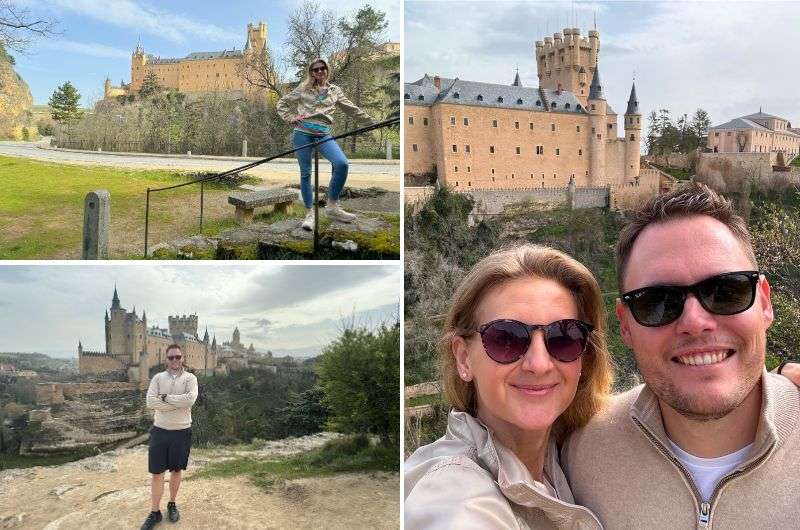
You’ll leave with a ton of pictures from the Alcázar!
Tickets for the Alcazar
If you’re visiting on the weekend in peak tourist season or over holidays, buy your tickets online in advance to avoid standing in line for an hour. Since there’s a separate ticket for the tower, you could end up standing around for way longer than necessary, especially considering that walking through the castle only takes like 20 minutes, 30 tops. The tower does get sold out, so buying tickets in advance could save you a bit of will-we-get-in-?! Stress.
4. Segovia Aqueduct
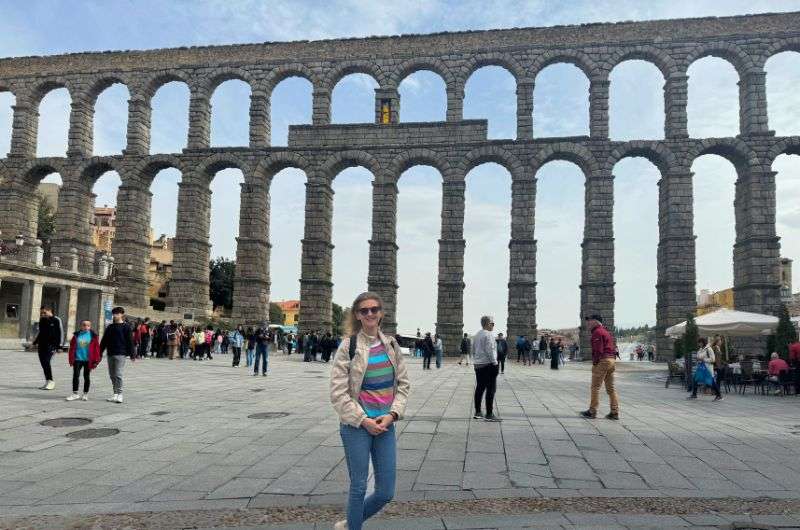
The unbreakable Segovian Aqueduct
- Price: Free
- Why I liked it: The fact that it’s still standing without a single dab of mortar is mind-blowing, as is the fact that it was still being used in the 1970s.
Stretching across one side of the city while the Alcazar stands proud on the other, the aqueduct creates a picturesque skyline and will blow your mind at least a little. The aqueduct is even on the city’s coat of arms, so it’s kind of a big deal.
The Segovia aqueduct was used to transport water from the Frío River, about 17 km (10.5 mi) away, to the city. It’s composed of roughly 24,000 granite blocks and stands at about 28.5 m (93.5 ft) at its highest point. And it’s—as is apparently every top sight in Segovia—huge.
I mean, come on, this thing has been standing for almost 2,000 years without a single dab of mortar! That’s right, no mortar. The stones are perfectly cut to fit together, relying solely on gravity and brilliant engineering. It’s mind-boggling when you consider all the history it’s survived—no invaders, natural disasters, or misguided renovators have managed to knock it down.
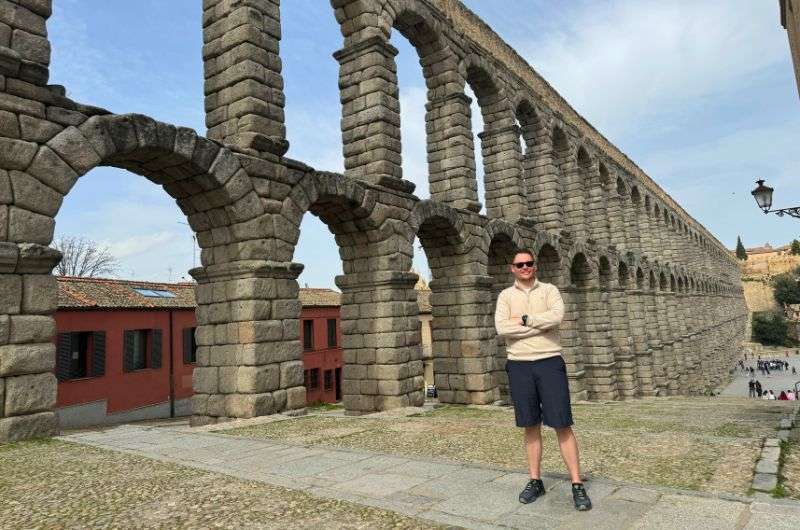
I recommend a walk along the aqueduct, you’ll get a much better understanding of how it worked.
Back in the day, the water brought in by the aqueduct served purposes like supplying the public baths, fountains, and private households. Amazingly, the aqueduct continued to be used for water transportation until the 20th century, serving modern homes and businesses. Most ancient monuments have been plundered for their stones, but not this one. It was still being used to transport water up until the 20th century (the 70s). Is that ultra cool or what?
I wasn’t happy with just taking a few photos at the square in front of the aqueduct and leaving and decided to walk alongside it, because I was curious to see what I’d find at the end. It felt like I was looking for the beginning of a rainbow, minus the pot of gold. I highly recommend doing this, just be ready to walk for quite a bit—20 minutes at a steady pace! Start your stroll at the Inicio de Aqueducto (start of the aqueduct on Google Maps) where you’e find a small structure and then you can see where the water would flow. You can go all along the aqueduct to the other end where there’s a viewpoint.

Roman engineering marvel
Are you surprised to see the aqueduct all the way down at number 4? While I get that the aqueduct is usually in the top spot for many, for me, the Alcázar and the cathedral take the cake (and the views of the city as a whole take… another cake). Still, the aqueduct is a Roman engineering marvel, no doubt about that.
5. The Royal Mint (Real Casa de Moneda de Segovia)

Real Casa de Moneda de Segovia
- Price: EUR 5 with audio guide
- Opening hours: Wednesday to Saturday 10 am–2 pm and 4 pm–6 pm, Sundays 10 am–2 pm, closed Mondays and Tuesdays
- Website: Royal Mint of Segovia
- Why I liked it: The Royal Mint gives you an up-close look at medieval innovation with old-school hydraulic machines in a nicely renovated historical building turned modern museum (with views!).
Alright, let’s talk about the Royal Mint of Segovia, or as I like to call it, the birthplace of Spanish money bling. This museum is tucked away outside the fortified city walls, in the pretty Eresma Valley—the views of the Alcázar from here are magnificent (no, you can’t get enough views in Segovia!).
King Philip II had some grand plans in 1583 and decided this would be the perfect spot for his new, innovative mint. I think he chose a really nice spot—all hail the King! By 1588, the building was up and running, making it the first mechanized currency minting factory in Spain.
Walking into the Casa de Moneda, you immediately sense the historical weight of the place. It’s spectacular. The building itself is a lovely historical site and has been renovated and turned into a great museum with all kinds of interesting exhibits. The museum is modern, with a cool collection and machine recreations that show the entire process from the arrival of the metal to the final coin.
But be prepared—many exhibits lack information in English, so grab the audioguide to fill in the gaps. The vast amount of information about the history of money and this mint is presented beautifully in the audio guide, and it’s kind of funny, too!

The waterwheels
The location was chosen due to the availability of water from the Eresma River, which powered the hydraulic machinery. This use of water power was pretty revolutionary. You can still see the waterwheels (recreated, not original) and channels that powered the minting machines. The entire process, from smelting the metal to stamping the coins, was carried out right here.
Your ticket also includes the Interpretation Center of the Aqueduct and the King's Garden, both worth a visit.
6. Enjoy a roasted pig baby with a side of guilt
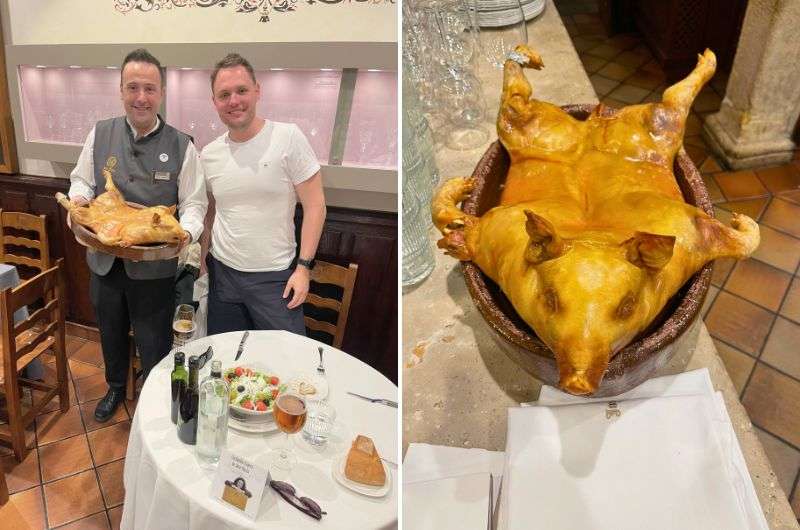
I treated myself to a Segovia cochinillo for my birthday (actually, it was my girlfriend’s idea)
- Price: EUR 30 for a good chunk of piglet
- Website: Restaurante Jose Maria
- Why I liked it: I like meat, and this is a local specialty. Plus, it was my birthday, so I felt the pig was sacrificed for good reason.
For a bonus culinary experience, you must try the cochinillo at José María Restaurant. This Michelin-starred spot is famous for its tradition of roasting three-week-old suckling pigs. Yes, it’s a bit brutal, and I did feel a tad guilty while eating it, but it tasted amazing.
This dish is a Segovian specialty and is available in other restaurants, but José María is arguably the most renowned. Plus, it’s not as expensive as you might think. For around EUR 30, you get a sixth of a piglet. The restaurant itself is traditional, with okay service but outstanding food.
Make sure you book your table—either on their website if booking further in advance, or by email or phone if booking less than 2 days before your visit. And be prepared to get stuffed—this meal will knock you out for the rest of the day. We ate at 2:30 pm, and I had no ambition to eat anything else until the next day!
7. The Royal Mile (Calle Real)
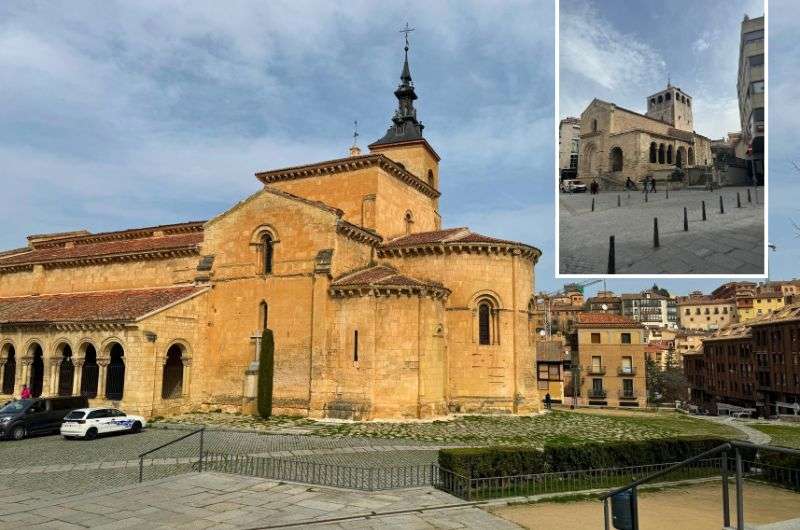
Just some of the monuments you’ll see on the Royale Mile
Why I liked it: Where else can you casually stroll from a Roman aqueduct to a medieval plaza in just a few minutes?
Price: Free
I want to mention the Royal Mile in Segovia, or as it’s officially known, Calle Real, even though it’s not a single spot, but the main artery of the city’s historic center. It stretches from the aqueduct to the Plaza Mayor (main square) by the Segovia Cathedral. Walking down Calle Real is like taking a scenic route through history, with a side of shopping, eating, and people-watching.
As you walk along the Royal Mile, you'll pass by a slew of significant landmarks. There’s the Casa de los Picos with its quirky facade, the historic Iglesia de San Martín, the lively Plaza Medina del Campo, and Plaza Mayor. Most of these places have earned their own spots on our list, so I’ll give you the detailed lowdown on them separately. Spoiler alert: if they made the cut, they’re definitely worth your time.
Calle Real isn’t just about the sights; it’s about soaking in the local vibe. Pop into a café for a coffee, browse the unique shops, or just enjoy the street performers. The energy here is infectious, and it’s a perfect way to get a feel for Segovia’s charm. Segovia is the perfect place for a day trip from Madrid, so if that’s what you’re thinking of doing, grab my Segovia 1-day itinerary.
8. Sanctuary of Our Lady of Fuencisla (Santuario de Nuestra Señora de la Fuencisla)

Sanctuary of Our Lady of Fuencisla
- Price: Free
- Opening hours: Daily 8 am–9 pm
- Website: Sanctuary of Our Lady of Fuencisla
- Why I liked it: Because it was a quick and easy stop right next to the viewpoints.
The Sanctuary of Our Lady of Fuencisla, the patron saint of Segovia, was built between the 16th and 17th centuries, and it’s a quick stop if you’re already checking out the nearby viewpoints.
The sanctuary is home to an incredibly ornate golden altar that you’ll stare at for a good minute—it takes a while for your eyes to adjust to the glare. Just remember to keep silencio, as it’s a popular spot for prayer, and there were quite a few people deep in thought while we were visiting. What’s really cool is that they actually encourage you to take photos and share them on social media. It's not every day you find a historic church that's all about those Instagram likes!
There’s an entire garden/park area in front of the church, with benches and trees to shade you from the heat. You also get wonderful views over the Alcazar and Cathedral.
The whole visit will take you just a few minutes unless you decide to linger outside, making it a perfect quick cultural stop following the miradores. So, snap a pic, soak in the vibes, and enjoy this little slice of Segovia’s religious heritage. And then head off to more interesting things to see in Segovia.
9. San Martin Church (Iglesia de San Martin)

Iglesia de San Martin
- Price: Free, or EUR 4 for audio guide
- Opening hours: Tuesday to Sunday 11 am–2 pm and 4 pm–6:30 pm, closed Mondays
- Why I liked it: A quick visit with a golden altar that’s worth its weight in gold! The short audio guide is a nice touch.
Next on the list is Iglesia de San Martin, a charming church with a brutal gold altar that’ll make your jaw drop. Typical Gothic style, of course. After visiting the Segovia Cathedral, it might not seem as impressive, but it’s definitely worth a stop.
You’ll pass by this church when walking from the Aqueduct to the Cathedral along the Royal Mile. Its exterior is striking, with Romanesque stones and an impressive façade. The tower adds a nice touch to the cityscape. Not much else I feel the need to report, it’s a church. Nice but not incredible.
Your visit will be over in 5-10 minutes, but don’t miss the hilariously short audio guide that comes with the EUR 4 entrance fee. It’s a quick but worthwhile stop on your Segovia visit.
10. Jewish Quarter (La Judería)
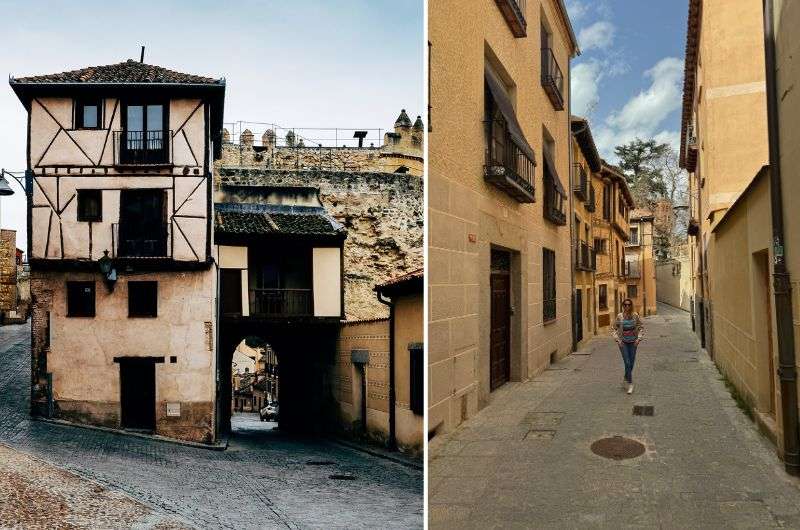
Take a walk through the medieval streets of Segovia’s Jewish Quarter
- Price: Free, except for the souvenirs you’ll end up buying
- Why I liked it: The narrow alleys have an atmosphere that’s both quaint and profound.
La Judería is Segovia’s old Jewish Quarter, where Jews lived until they were expelled during the Reconquista. It’s a maze of medieval streets, charming and atmospheric, perfect for a leisurely stroll with no real destination.
As you wander, you’ll find a museum, synagogues, and plenty of little shops. Make sure to walk to the cemetery on the other side—unless cemeteries aren’t your thing, in which case, skip it.
11. Casa de los Picos
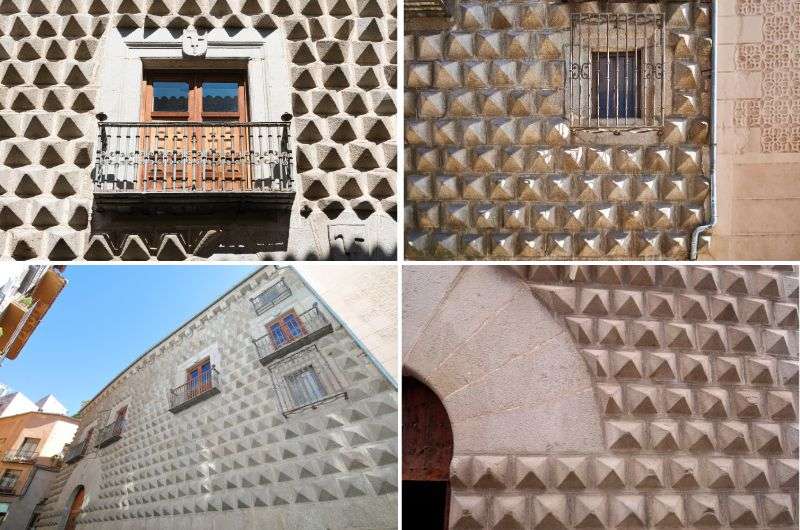
Casa de los Picos
- Price: Free
- Opening hours: You only look from the outside
- Why I liked it: I didn’t really.
Finally, there’s the Casa de los Picos, which translates to “House of the Pointy Things.” Or something like that. It’s famous for its unique façade, covered in granite points that look like they come from a medieval torture device.
Honestly, I found it just okayish. It’s a quick 30-second stop for a photo, but not a major highlight. Worth a look if you’re passing by. I wouldn’t go out of my way to see it, and definitely don’t hurry your visit at other places, like Segovia Cathedral and the castle, to make time for Casa de los Picos. There’s an art school inside, so you really are here to just look at the pointy things.
FAQ 1: Is Segovia worth visiting?
Yes, Segovia is one of the best cities to see in all of Europe, not just in Spain. I loved it, and I can't imagine anyone not thinking it was worth a day trip. If you're in Madrid, it's a no-brainer.
FAQ 2: What is a fun fact about Segovia?
Here are 10 quirky, weird, and fun facts about Segovia:
1. Segovia’s Roman Aqueduct has no mortar holding it together.
2. The Alcázar inspired Disney’s Cinderella Castle.
3. Segovia Cathedral was the last Gothic cathedral built in Spain.
4. The aqueduct was still used for water transport until the 70s in the 20th century.
5. Segovia’s medieval walls were never breached.
6. Cochinillo (roast suckling pig) is a celebrated local dish.
7. The Royal Mint (Casa de Moneda) was the first mechanized mint in Spain.
8. Segovia’s Alcázar served as a royal palace, military academy, and state prison.
9. The Sanctuary of Our Lady of Fuencisla encourages photo-taking for social media.
10. Segovia has a street named after its famous candy, Ponche Segoviano.
FAQ 3: Why is Segovia, Spain famous?
Segovia is famous for its stunning Roman aqueduct, the fairy-tale-like Alcázar castle, the impressive Gothic cathedral, and its delicious cochinillo (roast suckling pig). Segovia isn’t just a pretty face—it’s a city that drips with historical charm and significance—I have no idea how some people take only a day to see Segovia and Ávila. That’s just impossible! Perched on a limestone ridge, Segovia's dramatic landscape is a visual feast, with snowy mountains over 2500 m tall adding a touch of epicness to the skyline.

We loved Segovia! Go and see for yourself!
The city is like a history buffet, serving up goodies from the Roman era right through to the Middle Ages. Have I mentioned those are my two favorite eras? I was like a kid in a candy store in Segovia.
The Roman aqueduct is a 2000-year-old masterpiece that has somehow dodged destruction through all kinds of historical chaos. No invader, earthquake, or careless city planner has managed to take it down. Then there’s the Alcázar of Segovia—a fairytale castle that seriously puts Germany’s Neuschwanstein to shame. And let’s not forget the jaw-dropping Gothic cathedral. My head practically explodes every time I think about all the top monuments packed into this place.
FAQ 4: What is the specialty of Segovia?
The culinary specialty of Segovia is cochinillo, or roast suckling pig. This dish is a must-try and is most famously served at José María Restaurant. I did feel a slight bit guilty for chowing down on the poor guy, but those feelings were quickly overshadowed by the outstanding taste. He got back at me though—I was barely able to move after the meal, I was so full!
FAQ 5: How many days do you need in Segovia?
One day is plenty to see the main attractions in Segovia. There is much more to see from the outside, looking at it from the viewpoints, than spending hours in museums, making it perfect for a day trip from Madrid.
Alternatively, if you want to spend the night so you can enjoy a calm evening in Segovia without having to travel back to Madrid, check out Áurea Convento Capuchinos Hotel. It's a 5-star former monastery within the Old Town.
FAQ 6: How do I get to Segovia from Madrid?
You can drive or take a train, which is the preferred option. High-speed trains take less than 30 minutes to travel from Madrid to Segovia. You can walk from the Segovia train station to the touristy part of town in about 20 minutes, starting at the aqueduct. Check train prices, they vary wildly from about EUR 8 to EUR 30+.
I prefer the train over driving, as parking in Segovia is sparse and expensive. We were on a road trip, so we had to take the car, but if you can, just ditch your vehicle and opt for the train.
Read more: A 2-day Madrid itinerary
You might also be interested in reading:
- Andalusia Itinerary: Southern Spain in 10 Days
- Barcelona Itinerary: 5 days in Gaudí’s Metropole (with day trips)
- All You Need to Know about Spanish Tapas (+Restaurant Tips)
- The 10 Best Museums in Spain’s Top Cities
- The 16 Most Beautiful Beaches in Spain
This post contains affiliate links. I earn a small commission if you make bookings through my links, at no additional cost to you. Thank you for your support!


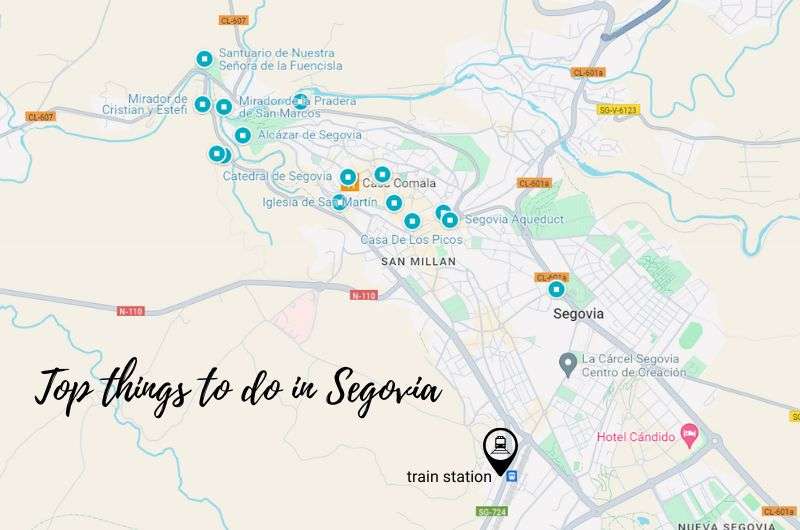
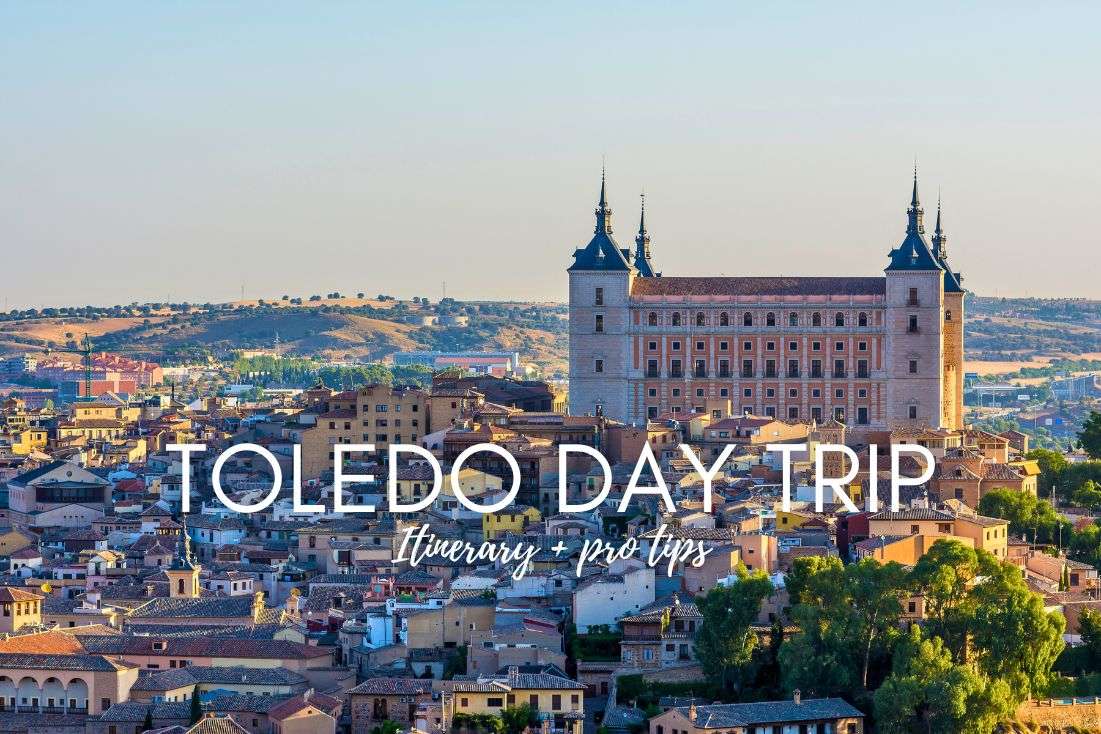

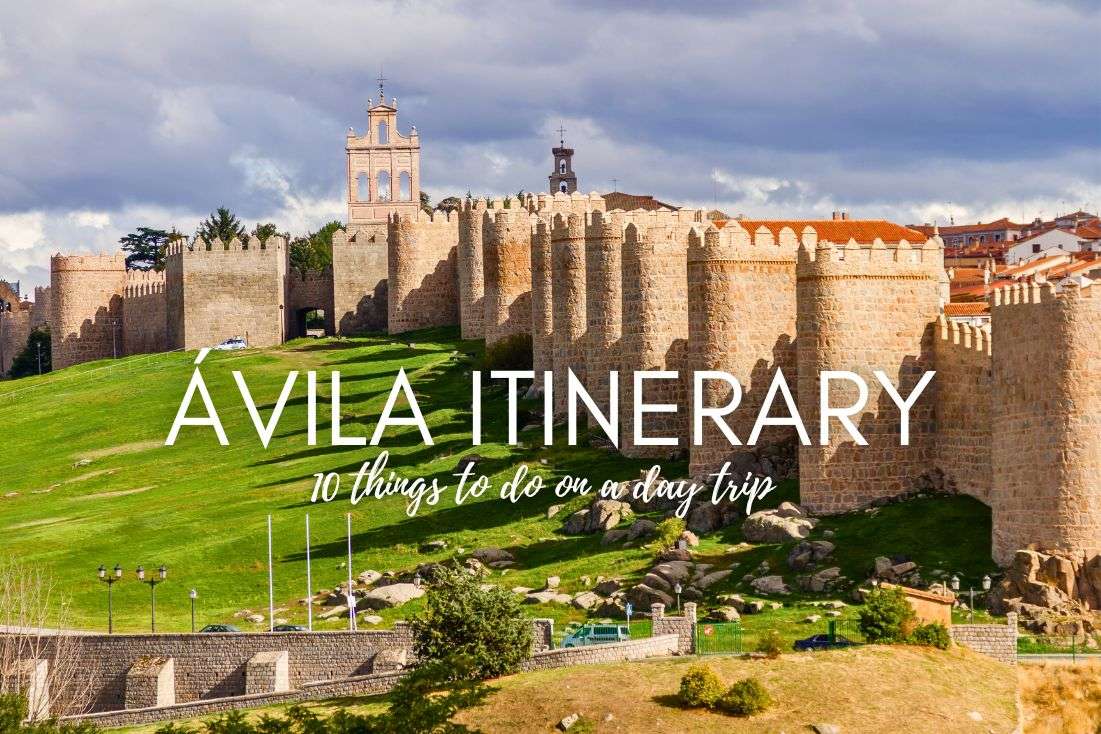





Comments | Thoughts? Give us a shout!